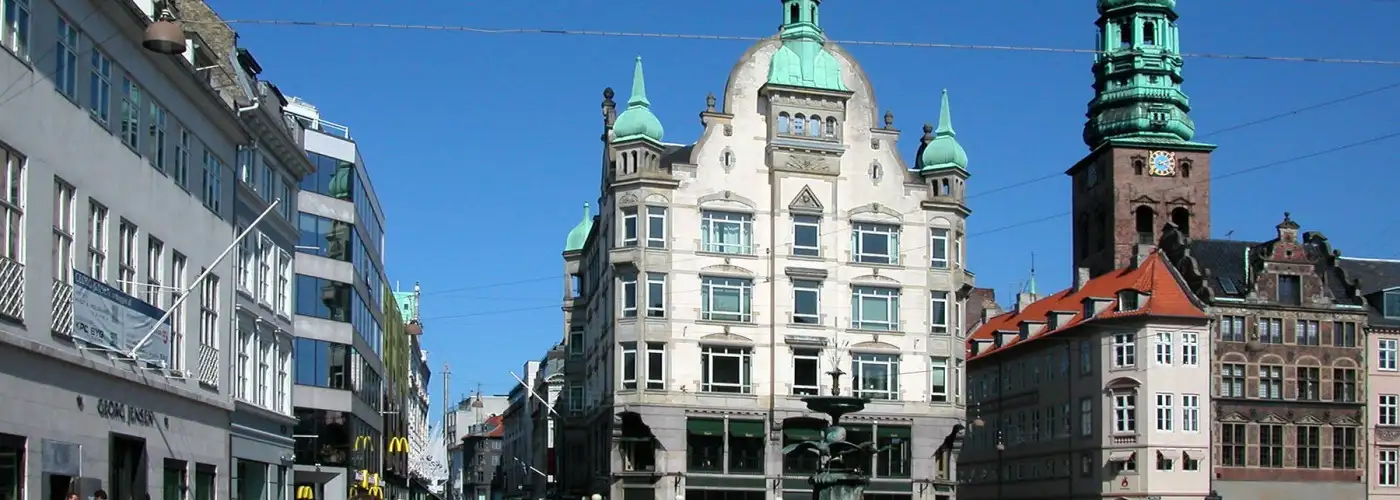Copenhagen, Denmark’s capital, is an improbable combination of corny Danish cliches, well-dressed executives having a business lunch amid cutting-edge contemporary architecture, and some of the funkiest counterculture in Europe. And yet, it all just works so tidily together.
I like tuning in to the little details of everyday life here. Along with the city’s key sights (such as the outstanding National Museum), I make sure to get out among the fun-loving locals. There’s an orderliness without rigidity, a sense of balance, and a general calm.
A busy day cycling the generous bike lines and taking in an old-town walk gives me my bearings. I feel right at home strolling the Stroget, a series of lively streets and inviting squares that stretches through the old town. Established in 1962, it was Europe’s first major pedestrian boulevard. It’s also a good place to try Denmark’s enticing open-faced sandwiches. Tradition calls for three sandwich courses: herring first, then meat, and then cheese.
Related: 10 Places in Europe You Never Thought You Could Afford
Appreciating the street scene means taking in the swoon-worthy art of the great Danish Neoclassical sculptor Bertel Thorvaldsen. Within a few blocks around the Stroget, I spy a marble bust of the sculptor at the landmark city hall, and then see Thorvaldsen’s work at the Cathedral of Our Lady and at Thorvaldsen’s Museum.
The deeper I go, the more I find myself plunging into a city of lovely spires and public spaces. Once-formidable fortified walls and moat systems have morphed into peaceful, lake-filled parks. The most royal public space is the King’s Garden surrounding the Renaissance-era Rosenborg Castle, where sun-loving Danes soak in the long days of their short summer.
Getting around by bike or on foot, I stumble upon some charming bits of Copenhagen that many travelers miss. For fast, cheap, and tasty street food, Danes eat polse (hot dog)—a nutritionally empty snack that locals call the “dead man’s finger.” It’s the dog Danish kids love to bite. Danes gather at polsevogne (sausage wagons) for munchies and polsesnak—the local slang for empty chatter (literally, “sausage talk”). If you join them, you can study this institution—and maybe pick up on some societal insights as well. Denmark’s “cold feet cafes” are a form of social care: People who have difficulty finding jobs are licensed to run these wiener-mobiles. As they gain seniority, they are promoted to work at more central locations.
Beyond the Stroget, the promenade along the Nyhavn canal is a comfy people zone with trampolines, harborview benches, and ice-cream-licking ambience. Wandering the harborfront, visitors are struck by the many young people drinking in the streets. But it’s not because the average Dane consumes more beer than we do—it’s because many young Danes can’t afford to drink in a bar, so they “picnic drink” their beers in squares and along canals, spending a quarter of the bar price. I like to drop by a little kiosk a block from the wharf at Nyhavn and grab a cold $2 beer to join in the scene.
RELATED: How to Do Europe on the Cheap in the High Season
Several blocks from the promenade is the new Inderhavnsbroen sliding bridge for pedestrians and bikes. This “Kissing Bridge” (it’s called that because the two sliding, or retractable, sections “kiss” when they come together) links the town center with Christianshavn across the harbor.
Christianshavn’s centerpiece is Our Savior’s Church, with a unique exterior spiral staircase that rewards those who climb it with commanding views of the city. And down the street is the famous commune, Christiania. In 1971, the original 700 Christianians established squatters’ rights in an abandoned military barracks. Two generations later, this “free city” still stands—a mishmash of idealists, hippies, and potheads.
Get outside the touristy main drag of Christiania to find a ramshackle world of moats and earthen ramparts, cozy tea houses, carpenter shops, hippie villas, children’s playgrounds, peaceful lanes, and people who believe that “to be normal is to be in a straitjacket.” A local slogan claims, “Only dead fish swim with the current.”
I’ll often end my Copenhagen day at the historic Tivoli Gardens, Europe’s most famous amusement park, operating since 1843. It’s a festival of entertainment—20 acres, 100,000 lanterns, and countless calories. It’s a joy to get lost in this wonderland of rides, restaurants, music, and games. I find it worth the admission just to see Danes—young and old—at play. Tivoli, so comfortable with its identity, is happily Danish and wonderfully Copenhagen.
Copenhageners have a knack for enjoying everyday experiences. Sampling the Danish good life (including a gooey “Danish” pastry), it’s easy to feel right at home here. Live it up in Scandinavia’s cheapest and most fun-loving capital.
More From Smartertravel:
- 10 Things You Must Eat (and Drink) in Copenhagen Right Now
- Europe’s Five Most Underrated Cities
- Why Locals (and You) Will Love Copenhagen This Year
Rick Steves (www.ricksteves.com) writes European travel guidebooks and hosts travel shows on public television and public radio. Email him at rick@ricksteves.com and follow his blog on Facebook.
(Photo: Rick Steves)
We hand-pick everything we recommend and select items through testing and reviews. Some products are sent to us free of charge with no incentive to offer a favorable review. We offer our unbiased opinions and do not accept compensation to review products. All items are in stock and prices are accurate at the time of publication. If you buy something through our links, we may earn a commission.
Top Fares From
Today's Top Travel Deals
Brought to you by ShermansTravel
Shop and Save with Country Inns...
Patricia Magaña
 Hotel & Lodging Deals
Hotel & Lodging Deals
$229 -- Chicago: Discounted Rates and...
Francesca Miele
 Hotel & Lodging Deals
$229+
Hotel & Lodging Deals
$229+
$188 -- Honolulu: Save on Oceanview...
Abigail Lamay
 Hotel & Lodging Deals
$188+
Hotel & Lodging Deals
$188+




